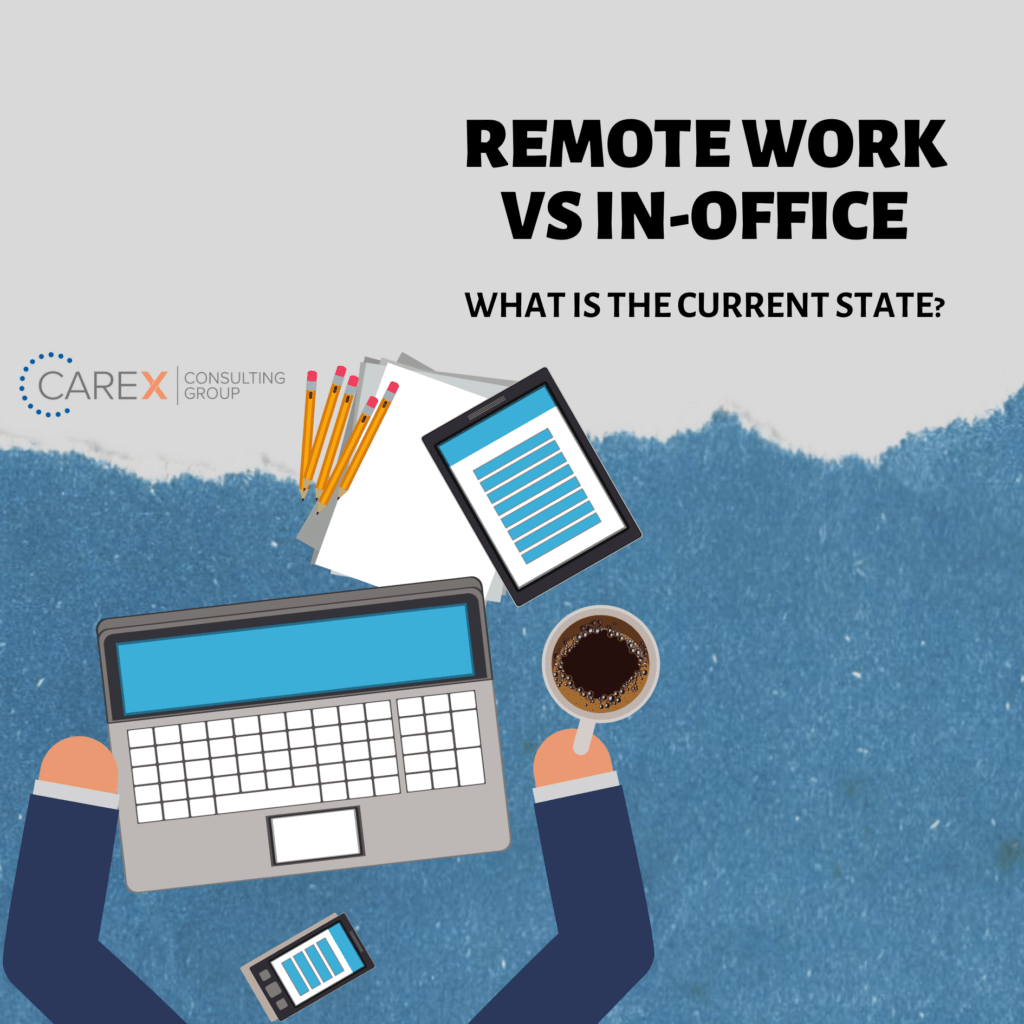By: Andree Mendoza, Technical Recruiter at Carex Consulting Group
I’m often posed with questions about the shift in workplace requirements, especially as we continue to progress further from the significant changes we saw during the quarantine and pandemic period. Although many believed that the heavy investment in office real estate would quickly usher us back to the pre-pandemic norms—where remote work was much less common (pre-pandemic, less than 6% of the employed workforce worked primarily from home according to Pew Research)—we have actually seen quite the opposite trend.
As we move through 2024, the landscape of work continues to evolve, showing a clear preference for more flexible work arrangements over traditional in-office roles. Here’s an overview of the current trends in remote, hybrid, and on-site work:
- Hybrid Work’s Rising Popularity: Hybrid work arrangements have gained significant traction, increasing to 22% of job postings by mid-2024. This reflects a strong preference for roles that blend remote and in-office work. By mid-2024, hybrid job postings had risen from just 9% at the start of 2023. This shift reflects a growing preference for work models that offer both flexibility and the opportunity for in-person collaboration.
- Stable Interest in Remote Work: Remote job postings have increased to 11% by the second quarter of 2024, showcasing a steady interest in fully remote opportunities. This marks a notable increase from early 2023 figures of 8%, though we have seen ebbs and flows for this number.
- Decline in On-Site Work: The traditional model of fully on-site work has seen a decline, with such roles dropping to 67% by the second quarter of 2024 from 83% at the start of 2023. This decrease highlights a shift away from the conventional office setting as businesses adapt to new norms that emphasize flexibility and employee well-being.
As we analyze the evolving work landscape through 2024, it is evident that businesses are continuously experimenting to find the right balance between in-office and remote work. While the traditional fully in-office model is becoming increasingly rare, dropping to 67% from 83% at the start of 2023, companies are actively exploring and implementing hybrid and fully remote roles. Hybrid work, in particular, has seen a significant rise, doubling from 9% to 22% of job postings, underscoring its growing acceptance as a viable and preferred work model. These trends reflect a broader consensus that the future of work will not revert to pre-pandemic norms. Instead, it will likely continue to evolve towards more flexible arrangements that cater to the well-being and productivity of employees. This shift represents a dynamic response to the changing expectations of the workforce, indicating that the quest for the ideal work formula remains very much in progress.


